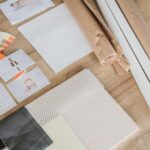Are you looking to enhance the beauty of your aquarium while saving some money? Learn how to make aquarium decorations at home with our step-by-step guide. Aquarium decorations are more than just visually appealing; they also provide essential hiding places and comfort for fish.
However, purchasing decorations from stores can be expensive and limited in variety. Making your own aquarium decorations not only allows for creative customization but also ensures that the materials used are safe for your aquatic pets.
In this article, we will provide a detailed guide on how to create homemade aquarium decorations using natural materials such as driftwood, rocks, and artificial plants. We will cover everything from the materials needed to the step-by-step process of creating safe and visually stunning DIY aquarium decorations. By making these creations at home, you can save money, explore your creative side, and have complete control over the safety and aesthetics of your fish tank.
Whether you’re a seasoned aquarist or a beginner looking to add a personal touch to your underwater environment, creating homemade aquarium decorations can be a rewarding and enjoyable experience. Stay tuned as we take you through the process of crafting unique and safe decorations for your aquatic pets.
Materials Needed
To create homemade aquarium decorations, you will need a variety of materials to bring your underwater landscape to life. Here’s a detailed list of the essential materials required for creating DIY aquarium decorations:
– **Driftwood:** Look for driftwood that is safe for aquarium use, such as Malaysian driftwood or Manzanita wood. Make sure to select pieces that are sturdy and have an interesting shape and texture.
– **Rocks:** Choose rocks that are aquarium-safe and won’t affect the water chemistry. Types of rocks commonly used in aquarium decoration include dragon stone, lava rock, and Seiryu stone.
– **Plants:** If you’re interested in creating artificial plants for your aquarium, you will need materials like silk or plastic plant leaves, floral wire, and substrate for planting. For those who want to use live plants in their aquarium decorations, consider getting aquatic plants such as Anubias, Java Fern, or Amazon Sword.
– **Adhesives:** Some DIY aquarium decorations may require adhesives to secure components together. Aquarium-safe adhesives like silicone and epoxy are essential for creating rock formations or securing driftwood in place.
– **Tools:** Various tools might be needed depending on the type of decorations you plan to make. This can include items like hammers and chisels for breaking down larger rocks or sanding tools for smoothing out rough edges on driftwood pieces.
By gathering these materials, you’ll be well-equipped to start creating unique and personalized decorations for your aquarium that both you and your fish will enjoy. Remember to prioritize safety when selecting materials, ensuring that everything is suitable for use in an aquatic environment. With the right materials at hand, you’ll soon be on your way to crafting stunning homemade aquarium décor.
Step-by-Step Guide to Creating Driftwood Decorations
When it comes to creating a natural and visually appealing aquarium, driftwood can be an excellent addition. Not only does driftwood provide a unique look to the underwater environment, but it also offers hiding spaces and grazing areas for fish. However, before adding driftwood to your aquarium, it’s crucial to properly prepare and sanitize it to ensure the safety of your aquatic pets.
The first step in creating driftwood decorations for your aquarium is finding suitable pieces of wood. When selecting driftwood, it’s important to choose pieces that are smooth and free from sharp edges or protrusions that could potentially harm your fish. Additionally, make sure the wood you select has been fully dried out to prevent any potential issues with mold or decay once submerged in water.
Once you have selected your driftwood pieces, the next step is to prepare and sanitize them before placing them in your aquarium. An effective method for preparing driftwood involves boiling the wood in a large pot of water for several hours.
Boiling helps to remove tannins and other organic compounds that may leach into the aquarium water, causing discoloration or affecting water quality. After boiling, thoroughly rinse the driftwood with clean water and allow it to dry completely before placing it in the tank.
By following these steps for finding, preparing, and sanitizing driftwood, you can create beautiful and safe decorations for your aquarium while ensuring the well-being of your aquatic pets. Additionally, incorporating driftwood into your aquarium setup provides a natural aesthetic that enhances the overall appeal of your underwater environment.
DIY Rock Formations
Creating rock formations for aquariums can add an interesting and natural aesthetic to your underwater habitat. Here are some tips and tricks for building safe and visually appealing rock formations for your aquarium:
Materials needed:
– Aquarium-safe rocks: When selecting rocks for your aquarium, it’s important to choose ones that are safe for aquatic life. Avoid rocks that have sharp edges or may contain harmful substances. Good options include smooth river rocks, lava rocks, or granite.
– Aquarium-safe adhesive: To securely hold the rocks together and prevent them from toppling over in the aquarium, you will need an adhesive that is safe for use in water. Epoxy resin is a popular choice for this purpose.
– Scissors or wire cutters: These tools will come in handy for trimming any excess adhesive or wire used to secure the rocks together.
Step-by-step guide:
1. Clean and sanitize the rocks: Before using any rocks in your aquarium, it’s essential to thoroughly clean and sanitize them to remove any dirt, debris, or potential contaminants. You can do this by soaking the rocks in a solution of water mixed with vinegar or bleach, then rinsing them thoroughly.
2. Arrange the rocks: Experiment with different arrangements of the rocks until you find a configuration that you like. Consider creating caves, ledges, or other structures to provide hiding spots for fish and create visual interest.
3. Secure the rocks together: Using epoxy resin or another aquarium-safe adhesive, carefully glue the rocks together to form the desired structure. Allow the adhesive to dry completely before placing the rock formation in your aquarium.
By following these tips and tricks, you can create visually appealing rock formations that not only enhance the look of your aquarium but also provide enrichment and shelter for your aquatic pets. Just remember to always prioritize safety by choosing appropriate materials and ensuring that any adhesive used is non-toxic to fish and other marine life in your tank.
Creating Artificial Plants
Creating realistic-looking artificial plants for aquarium use can add a touch of natural beauty to your underwater environment. Not only do these artificial plants provide aesthetic value, but they also offer hiding spots and coverage for fish, helping to reduce stress. Making your own artificial plants for your aquarium can be a fun and rewarding project, and it allows you to customize the look and feel of your underwater landscape.
When creating artificial plants for your aquarium, it’s essential to use materials that are safe for fish and the overall aquatic environment. Some of the best materials for crafting artificial plants include aquarium-safe silicone, plastic or silk foliage, non-toxic dyes, and weighted bases to anchor the plants in the substrate. It’s crucial to avoid using any materials that may leach harmful chemicals into the water or pose a choking hazard to the fish.
To craft realistic-looking artificial plants, start by selecting the type of plant you want to replicate. Whether it’s a broad-leafed plant like an Amazon sword or a delicate stem plant like Hornwort, choose a design that complements your aquarium’s overall look.
Next, gather the necessary materials such as silicone, plastic or silk foliage, and any additional embellishments like rocks or driftwood that may be used as part of the plant design. Once all materials are gathered, follow step-by-step instructions on how to assemble and decorate each individual plant according to its specific characteristics.
By creating your own artificial plants for your aquarium, you have full control over the size, shape, and color of each plant. This allows you to tailor them to fit perfectly within your tank’s design scheme while giving your fish a safe and natural-looking habitat.
Additionally, crafting these decorations at home can save money in comparison with purchasing pre-made options from stores. By following proper guidance on material use and construction techniques, you can create beautiful artificial plants that will enhance the visual appeal of your aquarium while providing practical benefits for its inhabitants.
Safe DIY Decorations
Creating homemade aquarium decorations can be a fulfilling and cost-effective way to enhance the beauty of your aquatic environment. However, it is essential to ensure that all DIY decorations are safe for fish and the overall aquarium environment. This section will provide valuable information on how to avoid harmful materials and properly sanitize homemade items, making sure that your creations are not only visually appealing but also safe for your underwater pets.
Avoiding Harmful Materials
When creating homemade aquarium decorations, it’s crucial to steer clear of materials that could potentially harm your fish or alter the water chemistry. For example, certain types of paint, glue, or plastic may contain substances that can leach into the water and pose a threat to aquatic life.
Opt for non-toxic and aquarium-safe materials such as natural wood, untreated rocks, and specific types of bonding agents that are labeled safe for aquatic use. Always research the safety of any material before using it in your aquarium.
Properly Sanitizing Homemade Items
Before adding any DIY decoration to your aquarium, it is important to thoroughly clean and sanitize them to eliminate any potential contaminants. Wood decorations should be carefully treated to remove any parasites or bacteria by soaking them in a solution specifically designed for sanitizing driftwood.
Rocks should be scrubbed with a brush and rinsed well with water to ensure they are free from dirt and debris. Additionally, artificial plants should be thoroughly washed with an aquarium-safe cleaner before being introduced into the tank.
By paying attention to the materials used and ensuring proper sanitation of homemade items, you can create stunning aquarium decorations that not only look great but also maintain the health and safety of your fish and their aquatic environment. Taking these precautions will allow you to enjoy the satisfaction of creating beautiful DIY decor while providing a healthy habitat for your underwater friends.
Maintenance and Care
After creating and installing homemade aquarium decorations, it’s essential to provide proper maintenance and care to ensure they remain safe and visually appealing over time. Neglecting to maintain these decorations can lead to deteriorating conditions, which could potentially harm the fish and disrupt the balance of the aquarium environment.
Regular Cleaning
One key aspect of maintaining homemade aquarium decorations is regular cleaning. Over time, algae and other organic matter can accumulate on surfaces, affecting the appearance of the decorations and potentially contaminating the aquarium water. To prevent this buildup, it’s important to clean the decorations on a regular basis using a soft brush or cloth. For delicate decorations such as artificial plants, gently rinsing them in warm water can help remove any collected debris without causing damage.
Sanitizing Homemade Items
In addition to regular cleaning, it’s crucial to periodically sanitize homemade items to prevent the growth of harmful bacteria or fungi. Driftwood, rocks, and artificial plants should be carefully removed from the aquarium and sanitized using a solution specifically designed for this purpose. After sanitizing, thoroughly rinse the items with clean water before returning them to the aquarium. This process helps ensure that homemade decorations remain safe for fish and do not introduce any harmful substances into the tank.
Monitoring Wear and Tear
Finally, it’s important to monitor homemade decorations for signs of wear and tear. Over time, materials such as driftwood may start to break down or lose their structural integrity. Likewise, artificial plants may fade or become damaged as a result of prolonged exposure to water and light. By regularly inspecting these items for any deterioration, necessary repairs or replacements can be made promptly to maintain both the safety and aesthetic appeal of the aquarium decor.
By following these guidelines for maintenance and care, hobbyists can enjoy their homemade aquarium decorations for years to come while providing a visually pleasing environment for their fish.
Conclusion
In conclusion, creating homemade aquarium decorations can be a rewarding and fulfilling experience for any aquarium enthusiast. Not only does it allow for a personalized and unique touch to be added to the aquarium environment, but it also provides a sense of satisfaction and pride in knowing that the decorations were handmade. Additionally, making decorations at home gives individuals the opportunity to create custom pieces that perfectly suit the aesthetic and needs of their specific aquarium setup.
The process of making homemade aquarium decorations also allows for a greater understanding and appreciation of the materials used within the aquarium. By personally selecting, preparing, and crafting driftwood, rocks, and artificial plants, individuals can develop a deeper connection with the natural elements of their underwater world. This hands-on approach can lead to a more conscious and sustainable approach to decorating an aquarium.
Overall, the benefits of creating homemade aquarium decorations far outweigh any challenges or concerns. From fostering creativity to promoting sustainability, DIY aquarium decorations offer a range of advantages for both hobbyists and their aquatic inhabitants. Therefore, readers are encouraged to embrace the opportunity to try their hand at making their own homemade aquarium decorations and experience firsthand the joy and fulfillment that comes with this creative endeavor.
Frequently Asked Questions
What Household Items Can You Use to Decorate a Fish Tank?
Household items that can be used to decorate a fish tank include small stones, driftwood, ceramic or glass figurines, PVC pipes, and even certain types of artificial plants. It’s important to ensure that any item you place in the aquarium is non-toxic and won’t harm the fish or alter the water chemistry.
Be sure to clean and sterilize any household item thoroughly before adding it to the tank.
What Is Safe to Use as Aquarium Decorations?
When it comes to aquarium decorations, it’s safe to use natural items such as rocks, shells, and driftwood as long as they are cleaned and sanitized properly before being placed in the tank. Additionally, there are many commercially available decorations specifically designed for aquarium use, such as resin ornaments, synthetic plants, and ceramic sculptures.
These items are manufactured with fish safety in mind and can make great additions to any tank.
How Do You Make Things for an Aquarium?
Making things for an aquarium can be a fun and creative endeavor. If you want to create your own decorations for your fish tank, consider using non-toxic materials such as acrylic or polyester resin to craft custom ornaments or structures. Another option is making your own artificial plants using silk or plastic materials.
Just be sure that anything you make is thoroughly cleaned and safe for aquatic life before adding it to the aquarium. Always prioritize the well-being of your fish when crafting homemade aquarium decorations.

I’m thrilled to be your companion on this exciting journey through the world of home decor and design. With a passion for turning houses into homes and a keen eye for the finer details, I’m here to help you transform your living spaces into beautiful, functional, and meaningful havens.





